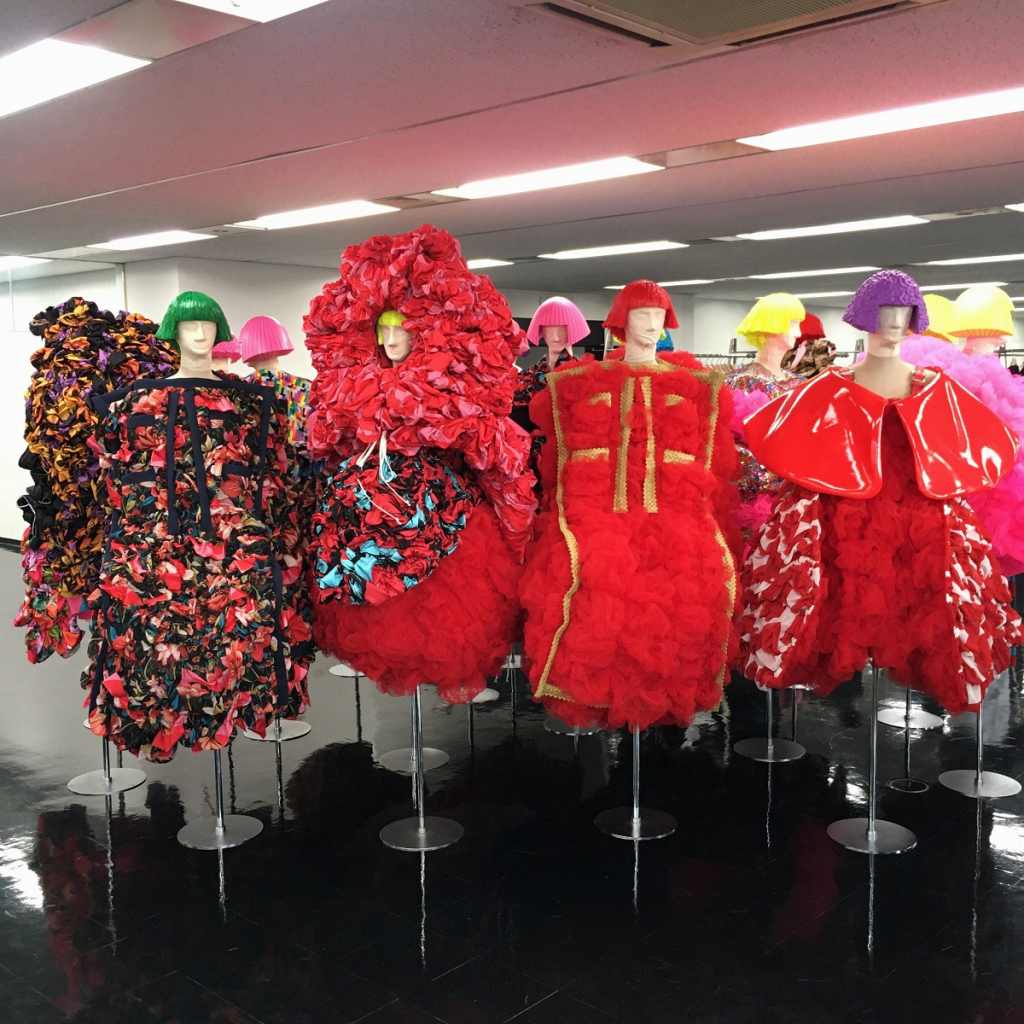The government has designated fashion design icon Rei Kawakubo a Person of Cultural Merit.
Following the Oct. 20 announcement, Kawakubo, 81, issued a statement saying, “This honor was made possible by the support I received from many people, including my staff and those working in material production and sewing factories, all of whom have striven hard to help me make clothes; I’d like to thank everyone anew.
“[With the award], the government has acknowledged fashion as a cultural entity, and is promoting academic studies and creative writing,” Kawakubo continued. “This is very encouraging and will lead to future development in those fields. Though I have no power to influence the current social climate and the atrocities occurring across the world, I’d like to continue working in the belief that making clothes — while seeking new forms of expression in my own way — constitutes a form of peace.”
Kawakubo has long struck me as someone who defies prevailing trends and goes her own, often rebellious, way. As such, receiving a ribbon or a medal seems slightly at odds with her image.
Not long ago, the late Kenzaburo Oe declined to become a Person of Cultural Merit and receive the Order of Culture, shortly after becoming a Nobel-Prize laureate in literature. It is likely that many of Kawakubo’s fans wish she had done the same.
However, Kawakubo has never balked at awards or decorations: I have a feeling that she may be acting of consideration for her employees rather than herself. Some employees’ parents still hold on to the outdated notion that fashion “is for women and children.” But, according to an executive of Kawakubo’s company, Comme des Garcons Co., whenever the president receives awards and decorations, it goes a long way in terms of allaying the concerns of parents whose offspring work in the fashion industry.
The Order of Culture is the highest secular accolade that can be awarded to a person in Japan. To receive that honor, recipients must initially be designated a Person of Cultural Merit. I believe that, before too long, Kawakubo will become a recipient of the Order of Culture. If that happens, she will be the third fashion designer to be so designated, following Hanae Mori in 1996 and Issey Miyake in 2010. These three designers helped spread Japanese fashion throughout the world.
Both Mori and Miyake created fashion that is, in different ways, easy to understand, grounded in the idea that clothes are meant to be worn. However, Kawakubo’s creations have no regard for such a notion and exist almost entirely with the realm of art — one might even dub her work avant-garde.
It is amazing that she has been active for more than half a century. Following Martin Margiela’s departure from the fashion industry, Kawakubo can be seen as the sole trailblazer of cutting-edge fashion. Her creative attitude has long attracted acclaim from fellow designers. Kawakubo is viewed as one of the few designers who can rival the legacy of Coco Chanel.
Interestingly, it was Kawakubo who came up with the idea of Play Comme des Garcons, a sub-brand that became Comme des Garcons’ biggest and most famous line. Touching upon her philosophy, Kawakubo said, “I don’t just design clothes, I design businesses, too.”

Comme des Garcons, which became a limited company in 1973, marked its 50th anniversary this year. Expecting to encounter a festive atmosphere, I visited the company on the opening day of the brand’s spring-summer 2024 women’s exhibition in Minami-Aoyama, Tokyo, on Oct. 24. To my surprise, however, the event felt like previous iterations.
However, I then recalled what Kawakubo repeatedly told me during previous interviews: “I don’t pay lip service [to such matters]”. For Kawakubo, the 50th anniversary likely felt no different from any other happenings.
A widely known saying springs to mind in this regard: “Tadorikite imada sanroku,” (One may trek at length, only to find oneself still at the foot of the mountain), meaning Kawakubo has come a long way, but still has a lot further to go.
The Comme des Garcons spring-summer event did not serve as a runway show per se, but rather as an exhibition-style event, in which people could look at a procession of clothes — an amazing experience given their rich flood of colors that felt akin to an avant-garde ikebana flower arrangement.
“People can feel depressed in gloomy situations, but I used that show to express expectations for a bright future,” Kawakubo said.
Can fashion reflect today’s dark times? Kawakubo’s rebellious and trademark use of black, suffused with rivers of color, would suggest an answer in the affirmative.
Source: Japan News


